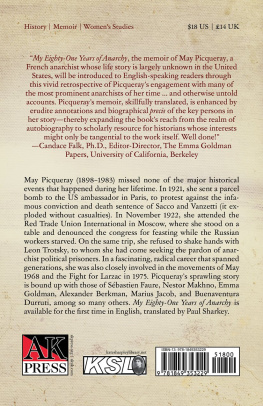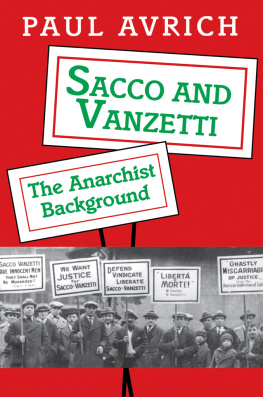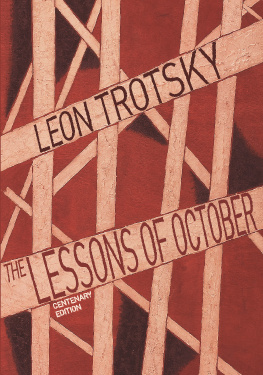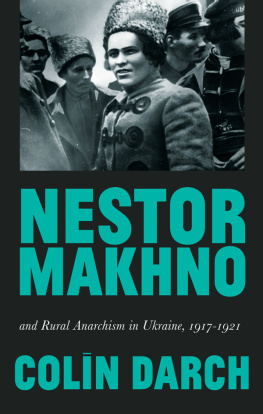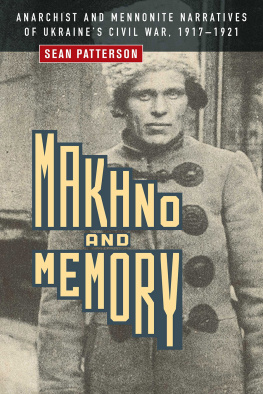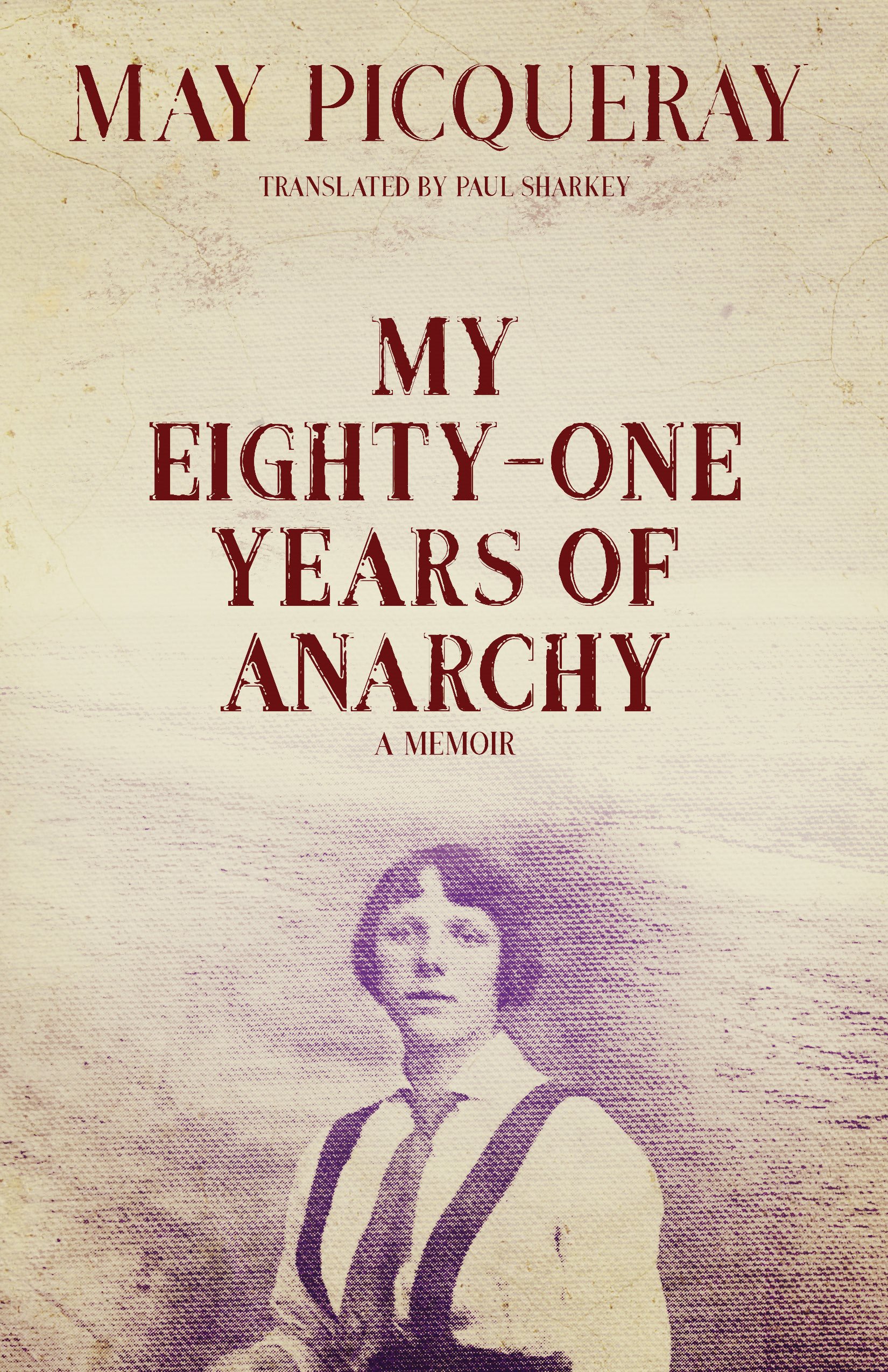Strike our shredded hearts.
introduction
But it is not my intention to pen a history of anarchism. Besides, I do not see how I could. Every time I read such a history, I discover things I never knew before, and I sometimes discover certain errors of detail. Just one of the reasons that have prompted me to write this book.
May Picqueray
May Picqueray spent most of her life as an anarchist and experienced directly or indirectly some of the most momentous events of the twentieth century. She was one of the numerous anarchists who visited Soviet Russia in the early days of its existence and was bitterly disillusioned by what she saw there. She took part in numerous international causes including the struggle to prevent the state murder of Sacco and Vanzetti and she provided material support to Spanish comrades in the aftermath of the defeat of the Spanish Revolution. Her work with those imprisoned in the brutal Le Vernet camp in support of exiled and imprisoned comrades alone deserves the highest praise we can give. Her country suffered fascist occupation and she worked from within this occupation to help people escape the country and avoid being sent to forced labor camps in Germany. She was also a courier for the French Resistance. After the Second World War she joined the Anarchist Federation (FA), holding various positions in the organization and fighting for the rights of French conscientious objectors during the Algerian War of Independence against French colonial rule. Like other anarchists she welcomed the injection of militancy that 1968 provided and during the nineteen seventies took an active role in the anti-nuclear struggle and edited the newspaper Le Rfractaire from 19741983.
May knew comrades such as Alexander Berkman, Emma Goldman, Louis Lecoin, Nestor Makhno, and Voline, and her autobiography presents her memories of them. Alongside these portraits she offers snatches of the history of anarchism that, to the uninitiated, offer a way into understanding some of our history. Of course these memories and vignettes are interesting but we have to be careful that we dont reduce the book to them alone. We dont want to lose May in her memories of others. Shes important in her own right, and reading her autobiography, it doesnt take long for us to realize that we are in the company of a committed rebel. May walked to the beat of her own drum and in doing so she forces us to consider our own ideas as to what being a rebelindeed being an anarchistmeans to us. There is joy and passion in these pages, but above all there is a dignity and an acceptance that, given the circumstances that made up her life, she has done everything she could to make the beautiful ideal of anarchy a reality.
Mays autobiography reflects an exuberance and passion that drove her life and drives our reading. When we put the book down we feel breathless; so much life lived in these pages and at such a pace. Mays search for Mollie Steimer and Senya Fleshin set inside the Kafkaesque world of Bolshevik prisons in 1922 is especially haunting as she moves across the wintry Russian landscape that is mirrored by the attitude of the prison authorities to her and their prisoners. We sense the stark isolation of this nightmare and the casually vicious brutality of the Bolshevik system. Similarly, her pages describing working under the Nazi occupation of France stay with us as she details a claustrophobic world where one mistake could lead to summary execution. Even after these nightmarish experiences, or perhaps because of them, her belief in the creation of a better world remained undimmed. Indeed the flame appears to have burnt brighter in response.
The anarchist movement May encountered and joined was essentially an oral one and by the time May wrote her autobiography had all but disappeared. As she suggests in her quote above she was attempting to fill in a few gaps in anarchist history. Consequently, she is keen to at least name all the people she knew who influenced her in some way. Its all the more poignant that some of them are just names but it makes us realize that the history of anarchism is far more than newspapers and pamphlets. For May anarchism was the cabaret singers and the clubs where anarchists gathered. It was her friends, some anarchist, some not. They enriched her life and drew her into anarchism and she wants to let us know that. If that oral culture has died she has left us paths to resurrect it if we are lucky.
We have to be careful that other aspects of the anarchist movement that May knew are not lost to us. May was a pacifist and anti-militarist but that did not prevent her offering solidarity and support to those comrades who were not. There could always be disagreements but when needed solidarity was there, offered almost instinctively. That instinctive response was often all that some anarchists had time for as circumstances around them changed quickly and urgently. We might want to consider the implications of solidarity coming first and not the assertion of one type of anarchism over another. May was very clear about who the enemy was!
Its hard to know how to measure a life. We can read the thanks of those people May helped escape from Nazi Germany in the Appendices in this volume. We can also read the moving testimonials of those who knew and admired her. May Picqueray was a remarkable comrade and woman. Her autobiography will remain as a passionate affirmation of anarchism delivered with the exuberance and sense of possibility that sustained May over the years. Its more than that, though. Its a passing of the anarchist baton to us so we carry on the struggle. Only if we refuse to take it up can Mays life be seen as a failure.
Kate Sharpley Library,
Summer 2018.
editorial notes
We have tried not to detract too much from the exhilarating pace of May Picquerays memoirs. We didnt want to create more footnotes than textsomething that is all too easy considering Mays penchant for throwing out lists of names. Consequently, we have tried to put in a minimum of footnotes while, at the same time, trying to provide both a little background to some of the people and events she mentions and offer the reader suggestions for further reading about them. If Mays memory forgets the odd salient fact readers can discover that for themselves. We have kept Mays own footnotes as she intended, which are indicated as note by M. Piqueray. All additional notes have been added by the KSL.
At the back of the book we have added a few appendices, including a primarily biographical appendix that covers many of the people May refers to in her text. A superscript asterisk in the text ( * ) denotes a name youll find in the biographical appendix. We hope that her memoir and our notes encourage you to explore more about Mays life as well as the beautiful ideal she dedicated her life to.

